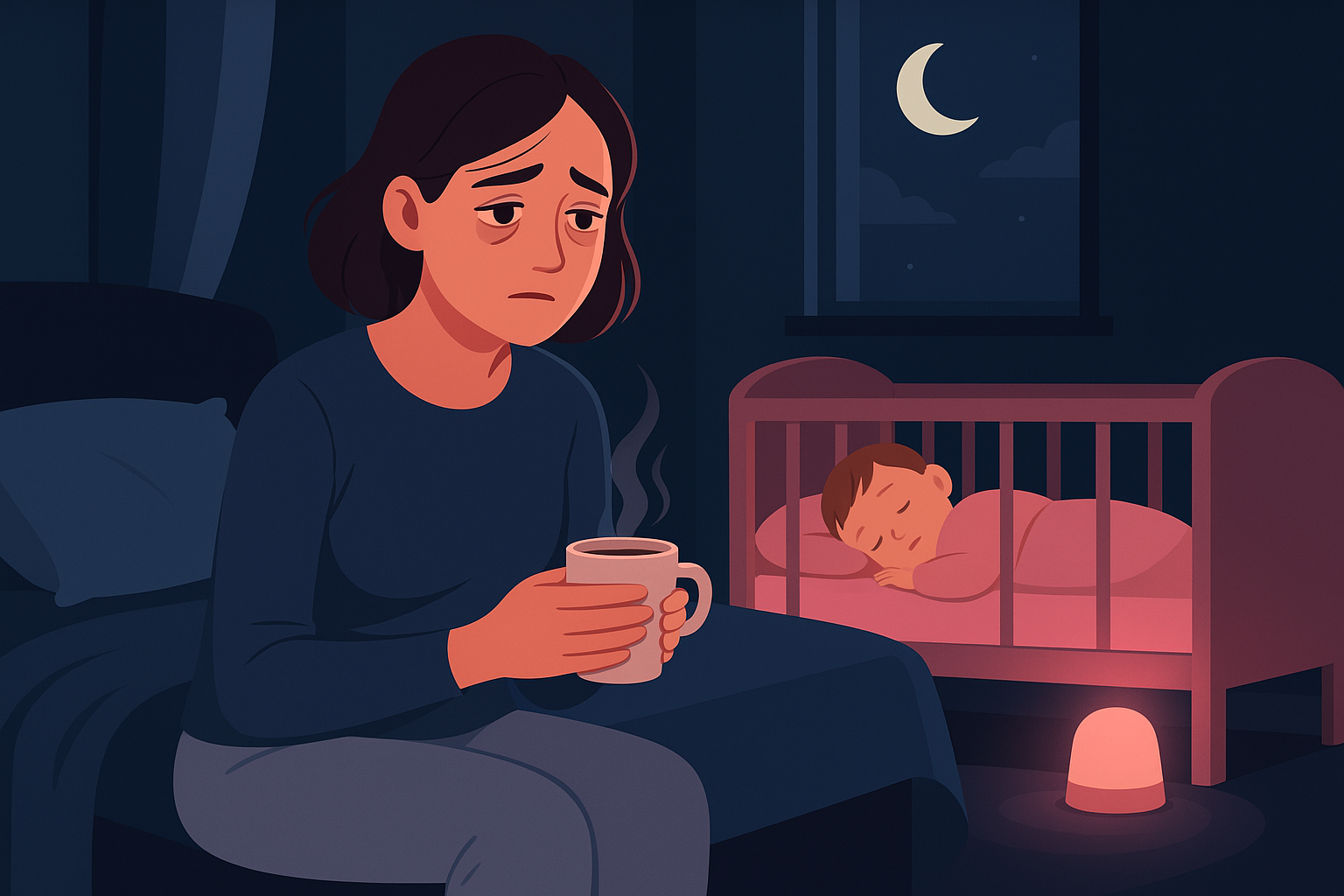Kids Sleep Problems: 9 Expert Solutions That Actually Work (2025)

Kids Sleep Problems: Complete Solution Guide for Frustrated Parents
Proven Methods to Fix Bedtime Battles, Night Waking & Sleep Regression (2025)
📑 Quick Navigation
1The Sleep Crisis: Why Your Child Won’t Sleep
You’ve tried everything. Bath time, stories, white noise machines, special mattresses. Your child still won’t sleep. You’re exhausted. Your partner is frustrated. And somewhere around 2 AM, you’re Googling “is my child broken?” (They’re not.)
Here’s the truth: Sleep problems in kids are incredibly common and highly solvable. About 25-50% of children experience sleep issues at some point. The good news? Most sleep problems have concrete solutions—and they don’t require cry-it-out methods if you don’t want them to.
This guide covers the science-backed solutions that actually work, based on research from Mayo Clinic, KidsHealth, Raising Children, and pediatric sleep specialists.
2Common Sleep Problems by Age
Your child’s sleep problem might look different depending on their age. Here’s what’s normal—and when it becomes a problem:
| Age Group | Common Sleep Problem | Normal or Problem? |
|---|---|---|
| Newborns (0-3 months) | Waking every 2-4 hours, day-night confusion | ✓ Normal (hunger-driven) |
| Infants (4-12 months) | Resistance to naps, frequent night waking | ⚠️ Often solvable |
| Toddlers (1-3 years) | Bedtime resistance, nightmares, sleep regression | ⚠️ Usually fixable |
| Preschool (3-5 years) | Nightmares, fears, refusing to sleep alone | ⚠️ Behavioral solutions work |
| School-age (6-12 years) | Difficulty falling asleep, night waking, sleep regression | ⚠️ Routine fixes usually work |
3Root Causes of Sleep Issues (What’s Really Happening)
1. Overtiredness (The Ironic Problem)
An overtired child actually sleeps WORSE than a well-rested one. Overtiredness triggers cortisol and adrenaline, making your child wired, hyper, and unable to settle. Classic signs: fighting sleep, more tantrums, seeming “hyper” at bedtime.
2. Poor Sleep Environment
Is the room too bright? Too warm? Too noisy? A poor sleep environment is one of the easiest-to-fix problems. Your child’s brain needs cool, dark, quiet to produce melatonin (the sleep hormone).
3. Inconsistent Bedtime Routine
Your child’s body has a circadian rhythm (internal clock). If bedtime changes every night, their body doesn’t know when to release sleep hormones. Consistency is literally more important than the specific routine.
4. Too Much Screen Time (Especially Before Bed)
Blue light from screens suppresses melatonin production. Experts recommend screens off at least 1 hour before sleep. Yes, even educational apps.
5. Anxiety, Fear, or Sleep Regression
Nightmares, fear of the dark, or anxiety about sleeping alone are developmental and solvable—but require a different approach than behavioral fixes.
6. Medical Issues (Less Common But Important)
Ear infections, reflux, allergies, or sleep apnea can cause sleep problems. If nothing else works, see your pediatrician.
4The 5-Step Sleep Solution Framework
Most children’s sleep problems resolve within 2-4 weeks of implementing these steps. Here’s the proven framework:
Step 1: Fix the Sleep Environment (Easiest Win)
- Temperature: 65-68°F (18-20°C) is optimal. Cool rooms produce better sleep.
- Darkness: Use blackout curtains. Even a dim nightlight can interfere with sleep.
- Sound: White noise machine (fan, app, or white noise machine) masks disruptive sounds
- Safety: Clear crib/bed of blankets, pillows, bumpers (SIDS risk)
Step 2: Establish a Consistent Bedtime Routine
Same time, same activities, every night. Your routine might be:
- 7:00 PM – Bath time (if your child enjoys baths)
- 7:15 PM – Pajamas & dim lights
- 7:20 PM – Story or cuddle time
- 7:30 PM – Lights out
The specific activities matter less than the consistency. Your child’s brain learns: “these activities = sleep is coming.”
Step 3: Adjust Daytime Naps (Critical for Toddlers)
- Nap should end by 3 PM (not 5 PM)
- If bedtime is 8 PM and your child naps until 4 PM, they won’t be tired at 8
- Most kids ages 1-3 need 1 nap; ages 3-5 might still need 1 nap or be transitioning off
Step 4: Get Morning Sunlight Exposure
Sunlight in the morning resets the circadian rhythm. Just 15-20 minutes of morning light helps your child’s body prepare to sleep at the right time at night.
Step 5: Evaluate Sleep Training (If Needed)
If steps 1-4 haven’t worked after 2 weeks, sleep training might help. More on this below.
5Bedtime Routine That Actually Works
Here’s a bedtime routine parents report works:
- Hour before bed: Stop screens, dim the lights, speak softly
- 30 min before: Bath or warm shower (warm water relaxes muscles)
- 20 min before: Pajamas, brush teeth, use the bathroom
- 10 min before: Cuddle time, story, songs, or calm conversation
- At bedtime: Lights out, white noise on
What makes this work: Your child’s brain gets signals that sleep is coming. No surprises. No “one more thing.” Consistency matters most.
6Sleep Training Methods Explained
If your child still won’t sleep after fixing the environment and routine, sleep training might help. Here are evidence-based methods:
Extinction (Cry It Out)
You put your child in bed and don’t return. Works quickly but emotionally hard for parents. Not recommended before 6 months.
Gradual Extinction (Fading)
Less harsh alternative. Check on your child at increasing intervals (every 2 min, then 5 min, then 10 min). Each night, wait longer before checking.
Bedtime Fading
Put your child to bed LATER (when they’re already sleepy), then gradually move bedtime earlier over weeks. This works for kids who struggle to fall asleep.
Co-Sleeping/Contact Methods
For families who prefer gentler approaches. Gradual soothing-down rather than leaving the room.
7Red Flags: When to See a Pediatrician
🏥 Schedule a Doctor’s Appointment If:
- Loud snoring – Could indicate sleep apnea
- Gasping or choking during sleep
- Excessive daytime sleepiness – Child can’t stay awake during the day
- Night sweats – Waking drenched despite cool room
- Teeth grinding – Persistently grinding teeth at night
- Sleepwalking or sleep terrors – Frequent episodes (some is normal, frequent isn’t)
- Bedwetting after age 5-6 when it was previously resolved
- Nothing works – You’ve tried everything for 4+ weeks with no improvement
These might indicate medical issues (reflux, allergies, ear infections, sleep apnea) that require professional evaluation.
8Kideos Station Sleep Solutions
We know sleep deprivation is no joke. At Kideos Station, we help create the conditions for better sleep:
Sleep Environment Tools for Better Rest
We offer smart baby monitors, white noise machines, blackout curtains, and comfortable cribs that support healthy sleep patterns.
Shop Sleep Solutions at Kideos Station →Pro tip: A good sleep environment (cool, dark, quiet) + consistent routine + patience = solving 90% of kids’ sleep problems without expensive fixes.
9Your Action Plan (This Week)
This Week:
- [ ] Evaluate your child’s sleep environment (temperature, darkness, sound)
- [ ] Write down your current bedtime routine
- [ ] Identify what’s NOT working (bedtime resistance? Night waking? Early morning waking?)
- [ ] Make ONE change (fix environment, adjust bedtime, add white noise)
Weeks 2-4:
- [ ] Stick with the routine (consistency is key)
- [ ] Track improvements (use a sleep diary)
- [ ] Add a second change if needed
- [ ] Celebrate small wins (even 15 min earlier bedtime is progress)
If No Improvement:
- [ ] Schedule pediatrician appointment to rule out medical issues
- [ ] Consider sleep training method that fits your values
- [ ] Stay consistent (most methods take 2-4 weeks to work)
You’ve got this. Thousands of families have solved their kids’ sleep problems with these methods. So can you.

